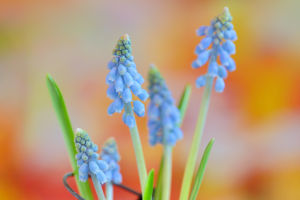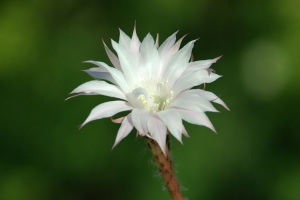
We’ve all seen those stunning clusters of tiny blue flowers blooming in the spring, and many of us may wonder what they are. Muscari, often referred to as grape hyacinth or string of pearls flowers, are among the most popular springtime flowers in gardens worldwide.
These flowers are not only beautiful but also easy to grow and care for, making them perfect for both seasoned gardeners and beginners. Let’s explore all there is to know about Muscari, from their origin to how we can cultivate them in our gardens.
What Exactly Is Muscari?
Muscari, scientifically known as Muscari Mill., belongs to the Asparagaceae family, native to regions stretching across the Mediterranean, Southern and Central Europe, North Africa, and parts of Western and Central Asia. These plants are typically perennial and deciduous, known for their bell-shaped, densely packed flowers. Muscari flowers resemble clusters of grapes, hence their common name, “grape hyacinths.”
They come in various colors, although blue is the most common, and there are even white cultivars. Muscari blooms in early spring, creating a vibrant display that often marks the end of winter.
Where to Find Muscari in the Wild
In their natural habitats, Muscari can be found growing in rocky, well-drained soils, often near forests or grasslands. They thrive in temperate climates and prefer areas with mild winters and cool summers. You can spot them growing wild in countries like Greece, Turkey, and parts of North Africa. However, these flowers are widely cultivated and grown in gardens around the world due to their striking appearance and ease of care.
How to Grow Muscari in Your Garden
For gardeners, growing Muscari is a rewarding experience. These plants are well-suited to a variety of garden types and can be planted in beds, borders, or even containers. Here are some tips for successfully growing Muscari:
1. Soil and Location: Muscari plants prefer well-drained soil that is not overly rich. They do well in both full sun and partial shade, so choose a location that gets at least a few hours of sunlight each day.
2. Planting Time: The best time to plant Muscari bulbs is in the fall, around October or November. Plant them 3-4 inches deep and about 2-3 inches apart. This will allow them to establish roots before the winter cold sets in.
3. Watering and Maintenance: Muscari does not require frequent watering, but ensure the soil remains moist, especially during the growing season. They are drought-tolerant once established, making them relatively low-maintenance.
4. Fertilizing: While Muscari can grow without much fertilization, adding a slow-release fertilizer in the spring can help boost their growth and ensure a vibrant bloom.
5. Winter Care: These plants are hardy and can survive in cold climates, but it’s helpful to mulch around the base of the plants during the winter months to protect the bulbs from extreme cold.
Types of Muscari to Consider
There are several varieties of Muscari that we can choose from, depending on the look we’re going for in our gardens. The most popular types include:
1. Muscari armeniacum: This is the most well-known variety, with bright blue flowers resembling clusters of tiny grapes. It’s often used in gardens to create a stunning spring display.
2. Muscari botryoides: Known for its slightly larger flowers, this variety produces pale blue to violet-colored blooms.
3. Muscari ‘White Magic’: If you’re looking for a more delicate appearance, the white version of Muscari offers an elegant look with its pure white flowers.
Benefits of Growing Muscari
Muscari are more than just beautiful additions to our gardens; they offer a number of benefits:
- Early Blooms: Muscari are among the first flowers to bloom in spring, signaling the end of the winter season.
- Low Maintenance: These flowers are easy to care for, making them ideal for gardeners of all skill levels.
- Attract Pollinators: The sweet fragrance of Muscari flowers attracts bees, which help pollinate our gardens, promoting biodiversity.
- Versatility: Muscari works well in a variety of garden styles, from formal beds to wildflower meadows.
Tips for Creating a Muscari Display
If we want to make the most of our Muscari, consider planting them in groups for a more impactful display. They also pair beautifully with other spring flowers such as daffodils, tulips, and crocuses. You can even plant them in containers to decorate patios or balconies.
Bring Muscari Into Your Garden!
Muscari flowers offer an enchanting addition to any garden. Their vibrant hues and simple care requirements make them a go-to choice for gardeners of all levels. If you want to infuse color into your flower beds or enjoy an early burst of spring blooms, Muscari are an excellent option. So, why not introduce these delightful flowers into your garden and revel in their beauty year after year?
Lykkers, have you ever had the pleasure of planting Muscari? If you have, we’d love to hear your tips and how these charming flowers have brightened your garden. If not, give them a try and let us know your thoughts!
How To Plant Muscari Bulbs For Stunning Flowers!
Video by Horticulture Magazine


